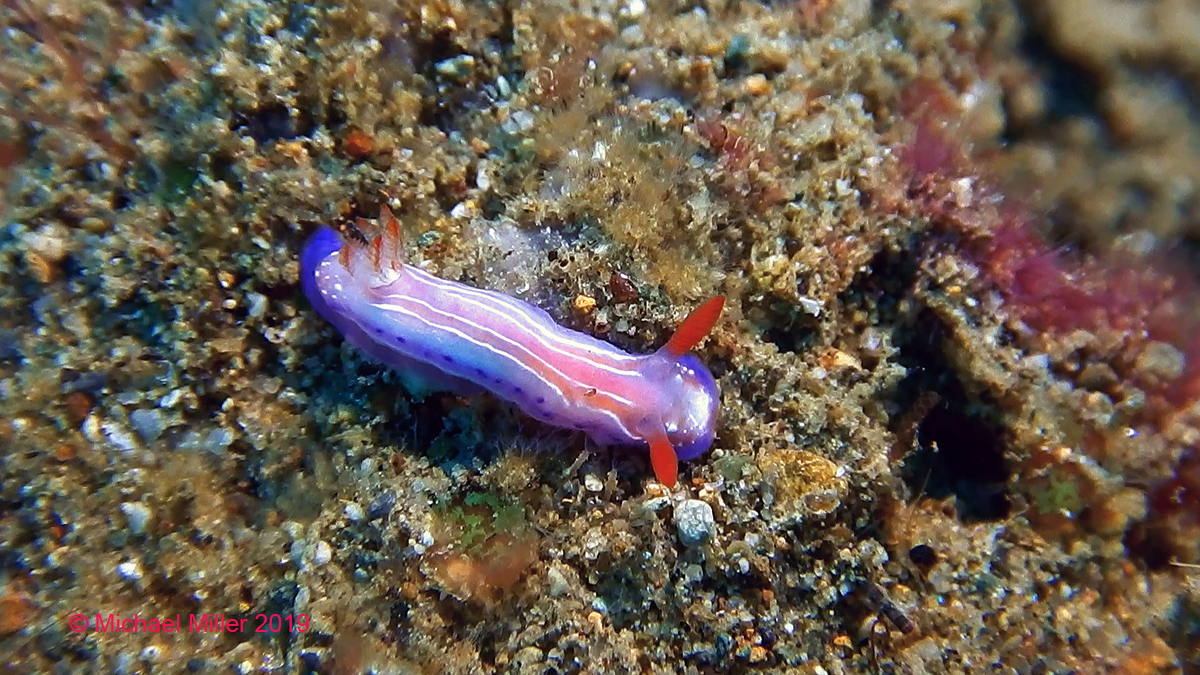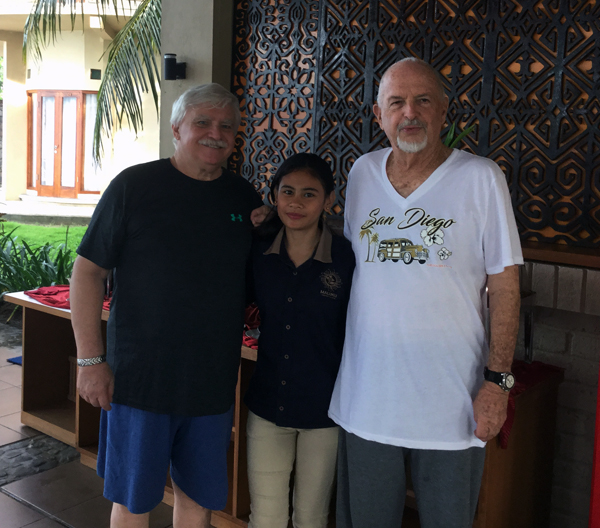 |
Image courtesy of Webmaster
Ambon, Indonesia
Nikkon CoolPix AW 130 Freeze Frame
Jim Black and Mike Miller on assignment in Ambon, Indonesia
 |
Members of the genus Thorunna have always been a little tricky to me. Webmaster Mike had originally ID'ed this specimen as Thorunna sp. 5 in NSSI 2d Ed. But Thorunna sp. 6 is certainly close. The four white stripes, purple marginal spots and white mantle glands are almost indistinguishable between the two undescribed species. The only differences I can see, as pointed out in NSSI 2nd Ed, is that Thorunna sp. 5 has red-orange band on the anterior margin, and a white band on the posterior side of the rhinophores, missing in Mike's specimen. Until now, Thorunna sp. 5 is only known from the Marshall Islands and T. sp 6 from the Philippines. I think this is one of those where we need more info about the internal anatomy and some genetic analysis. Dave Behrens Sammamish, WA 98074 May., 2019 Send Dave Behrens email at davidwbehrens@gmail.com |

Attention all you Sluggers, and you know who you are! The NSSI 2nd edition is now available in ebook PDF and book form . The hard back version will become available Nov. 1st. Both will cost $65 (individually). You will need to jump through a few hoops to get the electronic version as pdf distribution is protected by Adobe ID!! Please read the following to enable reading your electronic purchase! This new 2nd Edition is updated and reorganized, including 185 new species. Among other features, the new edition includes additional photographs of species, an identification key, and an up-to-date classification reflecting the latest evolutionary relationships. The Indo-Pacific represents the largest expanse of tropical ocean in the world, stretching from the Indian Ocean coast of southern Africa and the Red Sea to the central Pacific of the Hawaiian Islands, Easter Island and the Marquesas. This region supports the most diverse marine fauna of any place in the world for most groups of marine organisms. The nudibranchs and sea slugs are no exception to this rule; there are about 3,000 described species of these organisms in the world and at least 40% of these have been found exclusively in the Indo-Pacific tropics. This book illustrates 2,138 Indo-Pacific nudibranchs and sea slugs, including many undescribed species.
|

|
